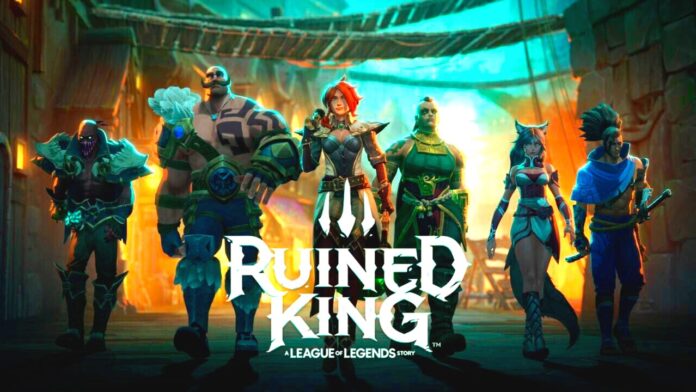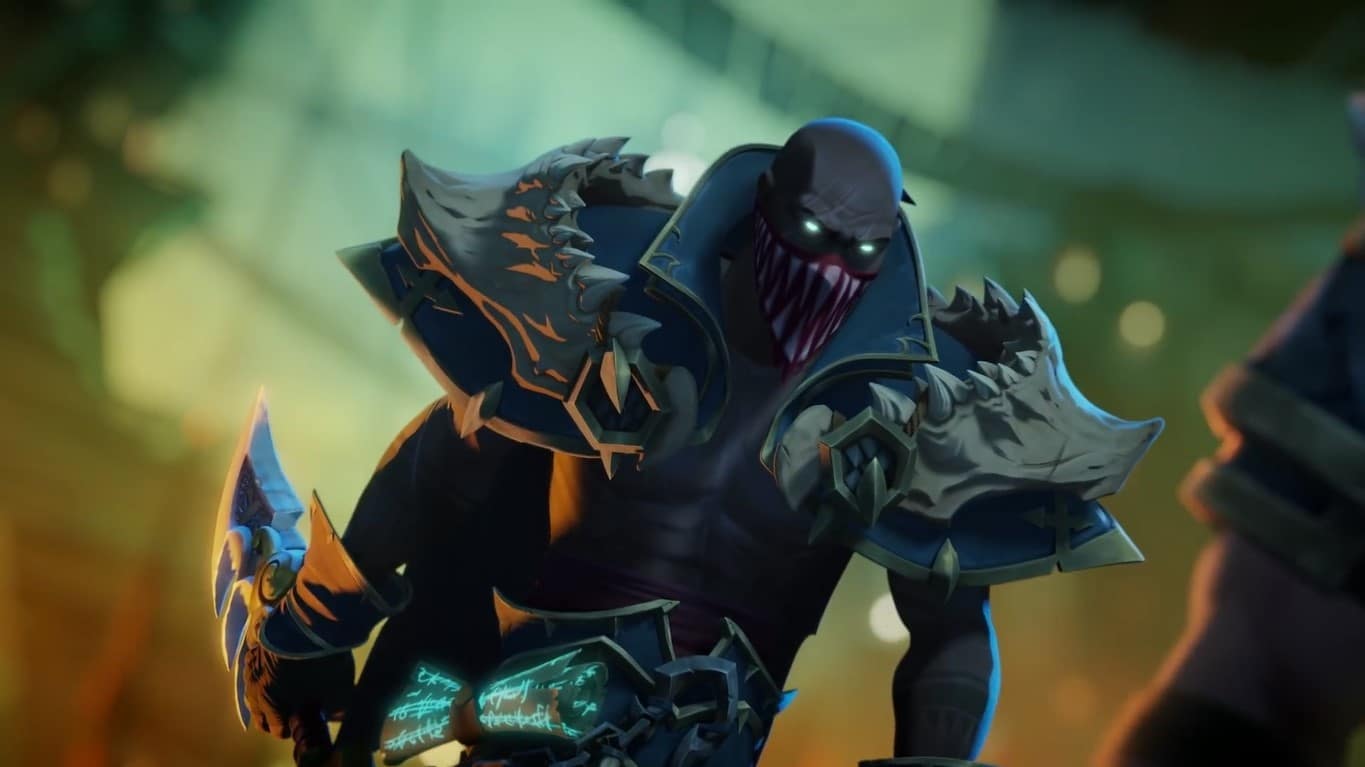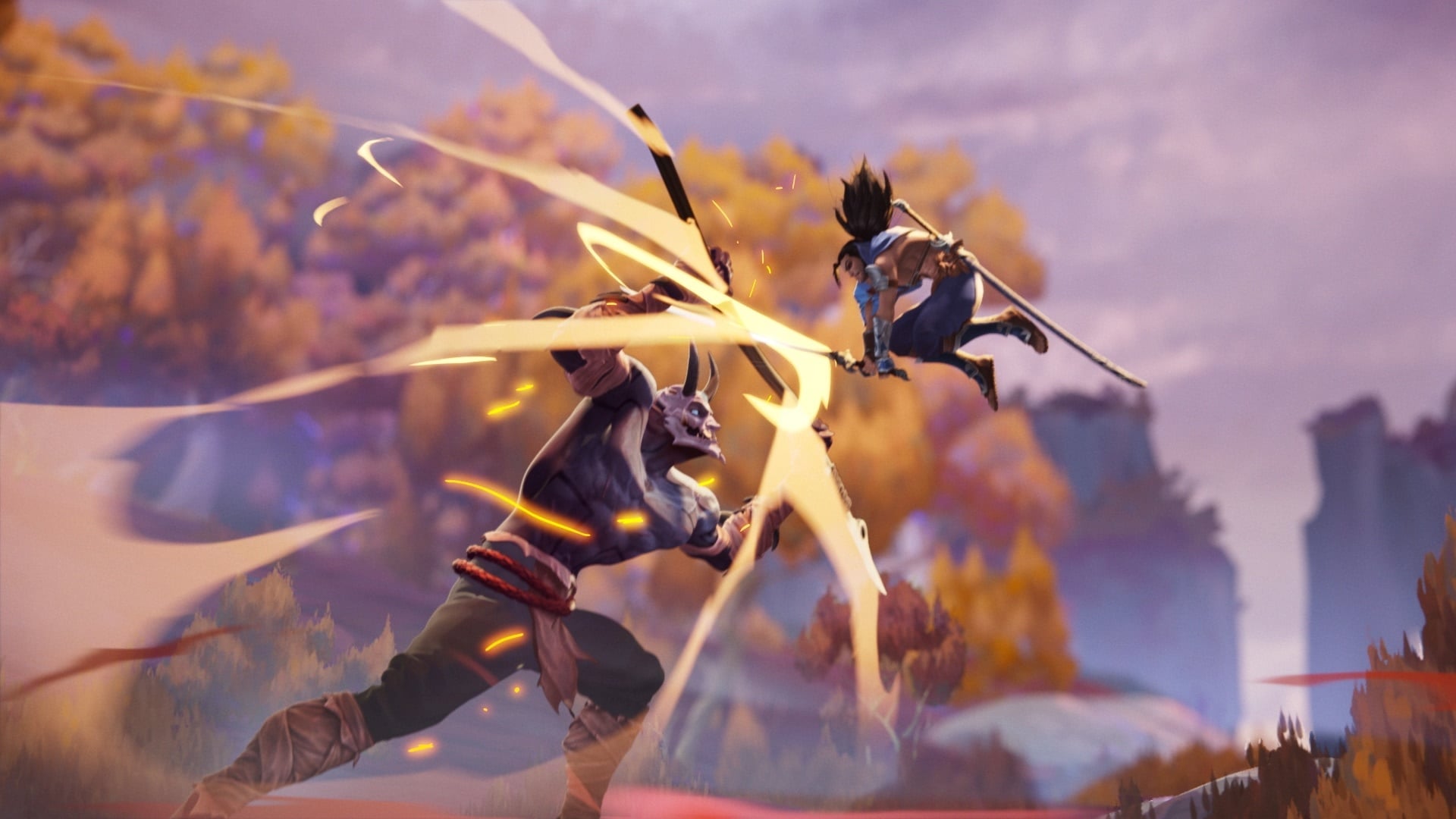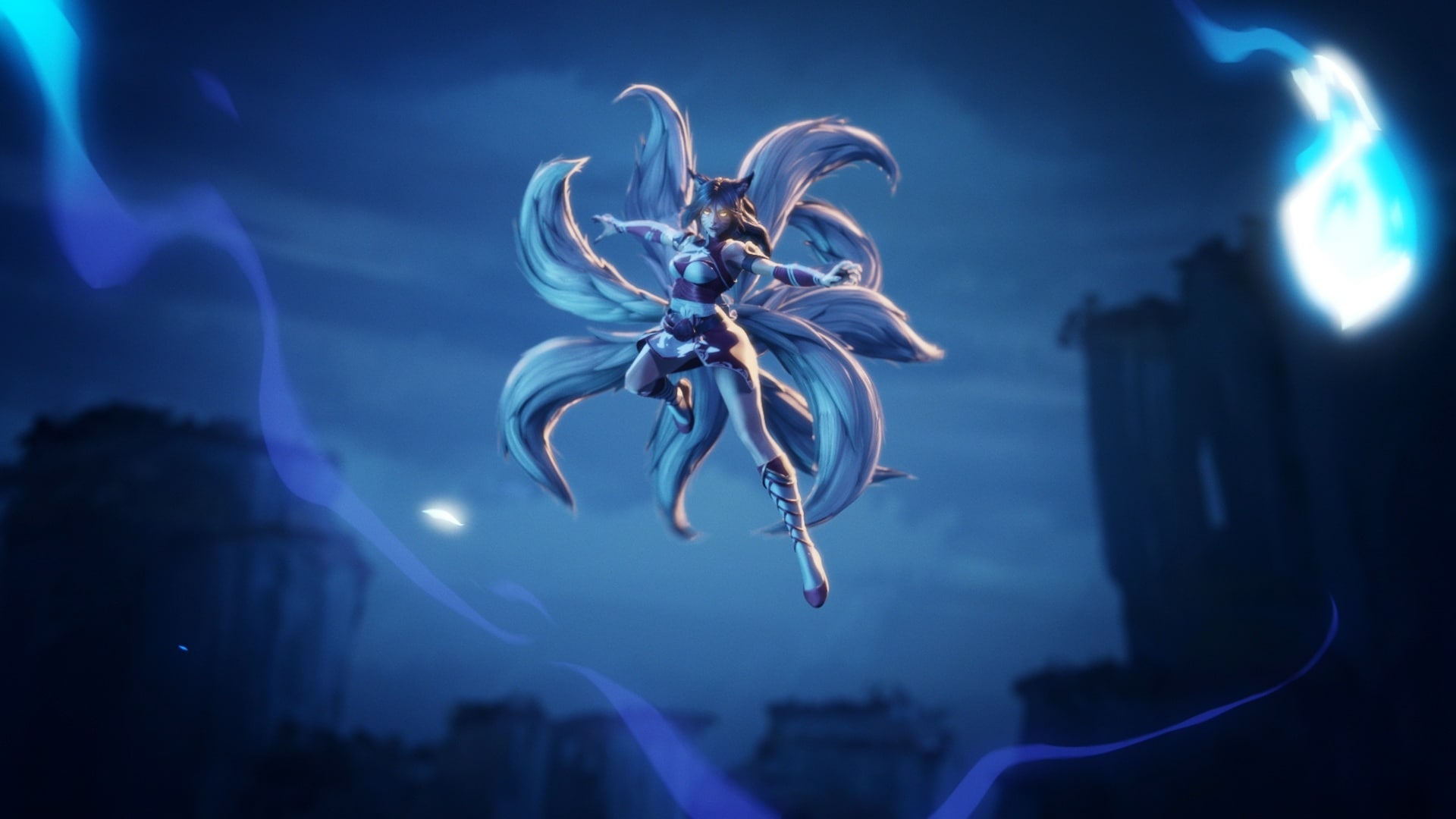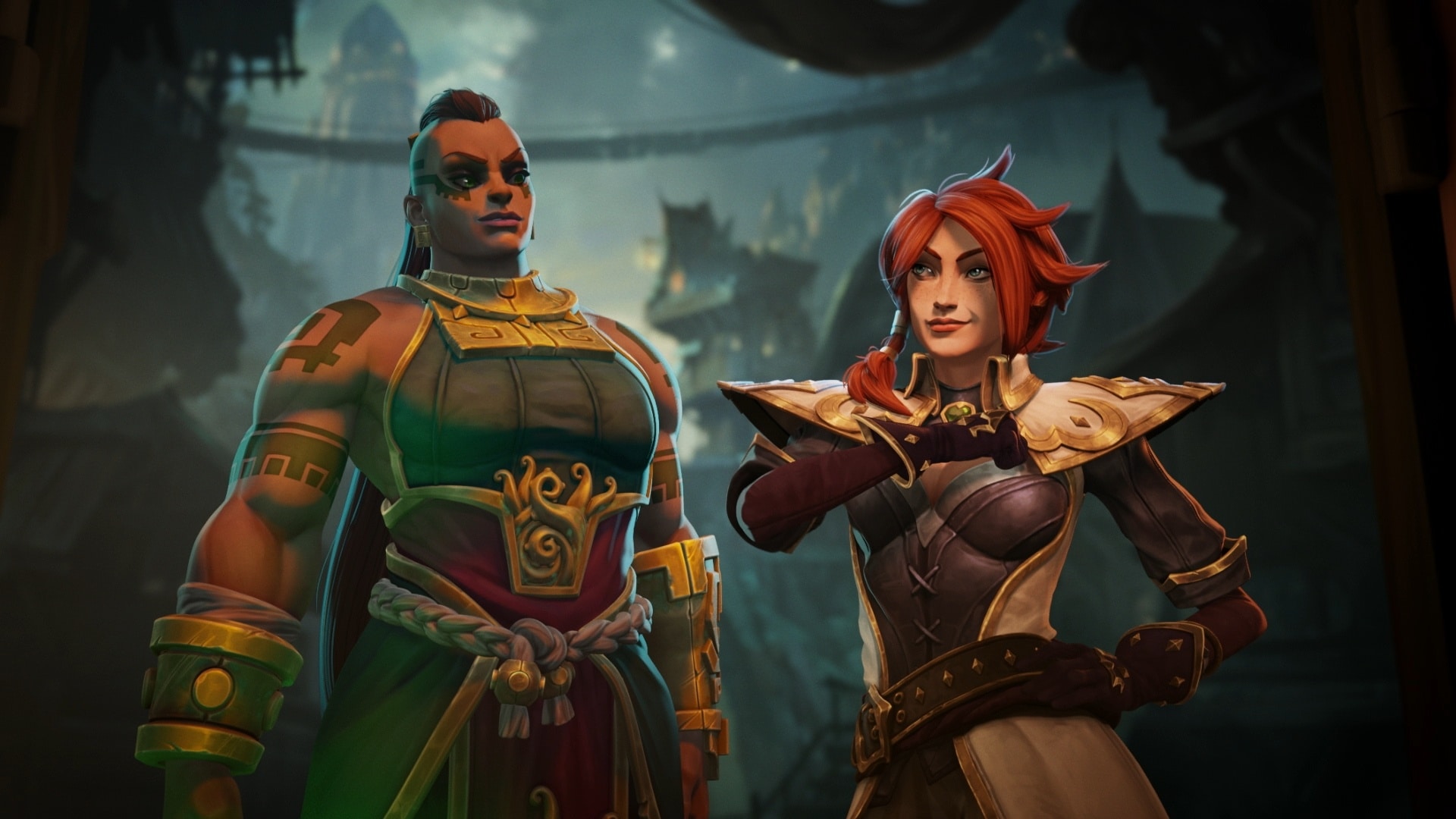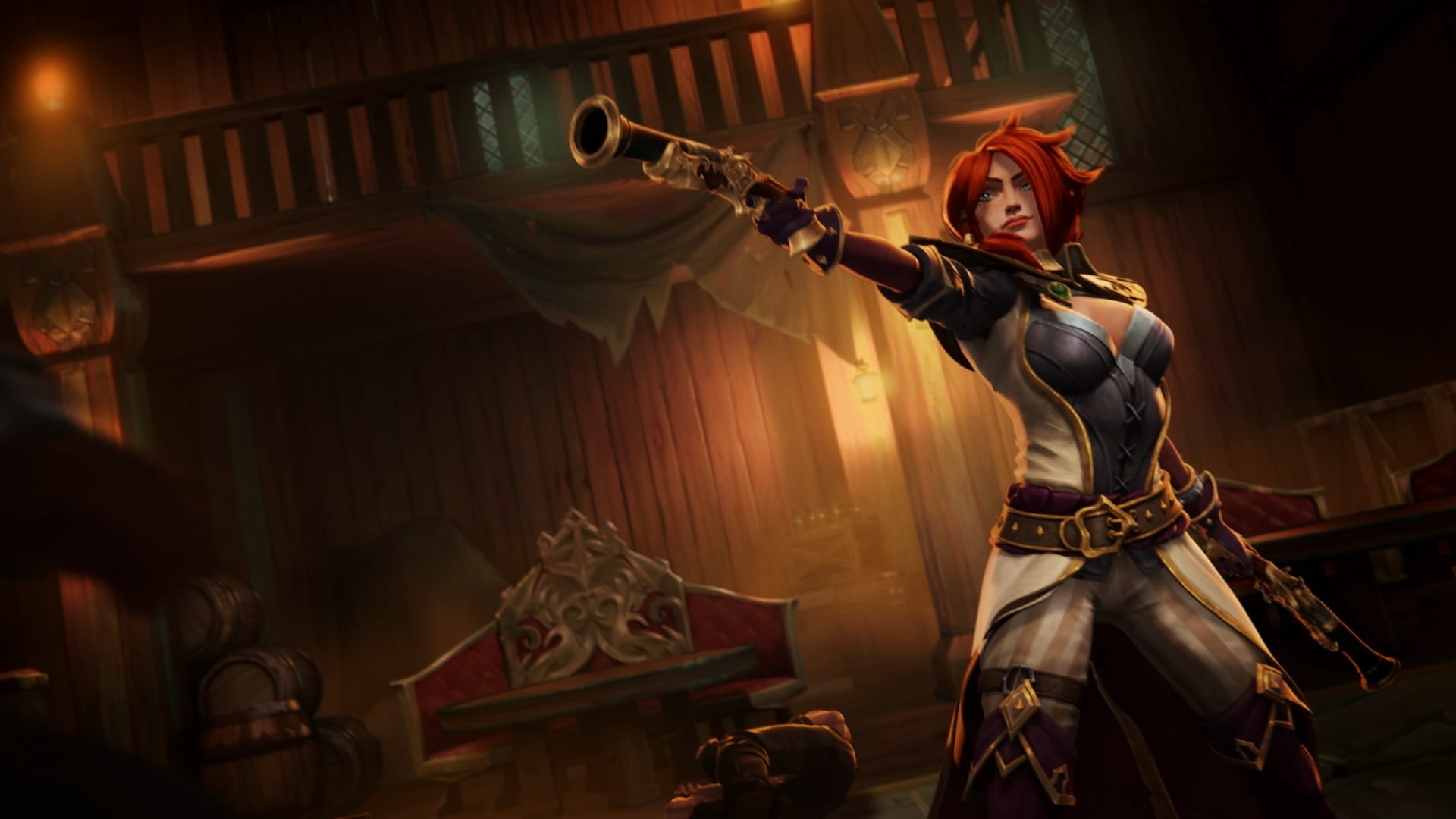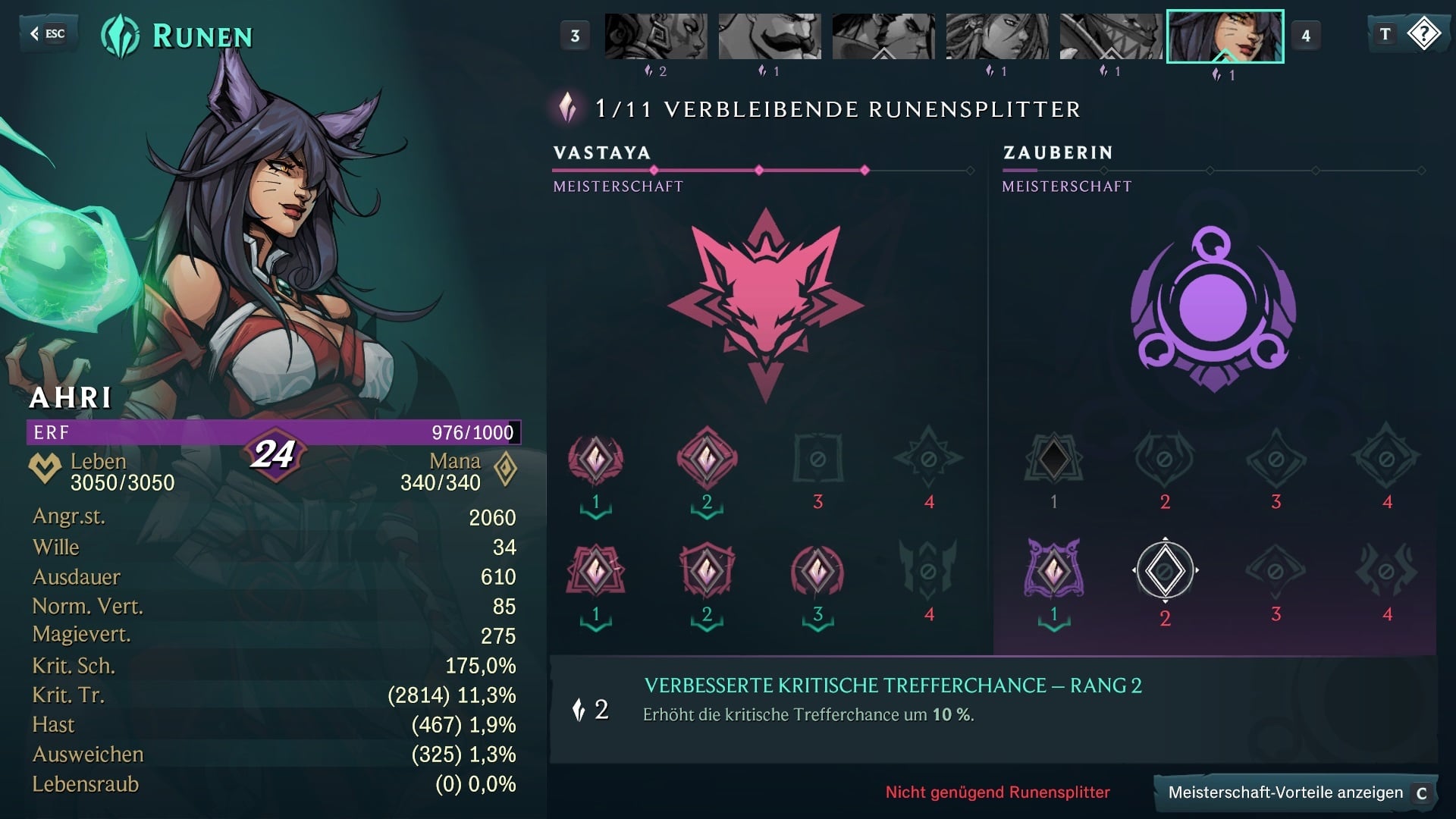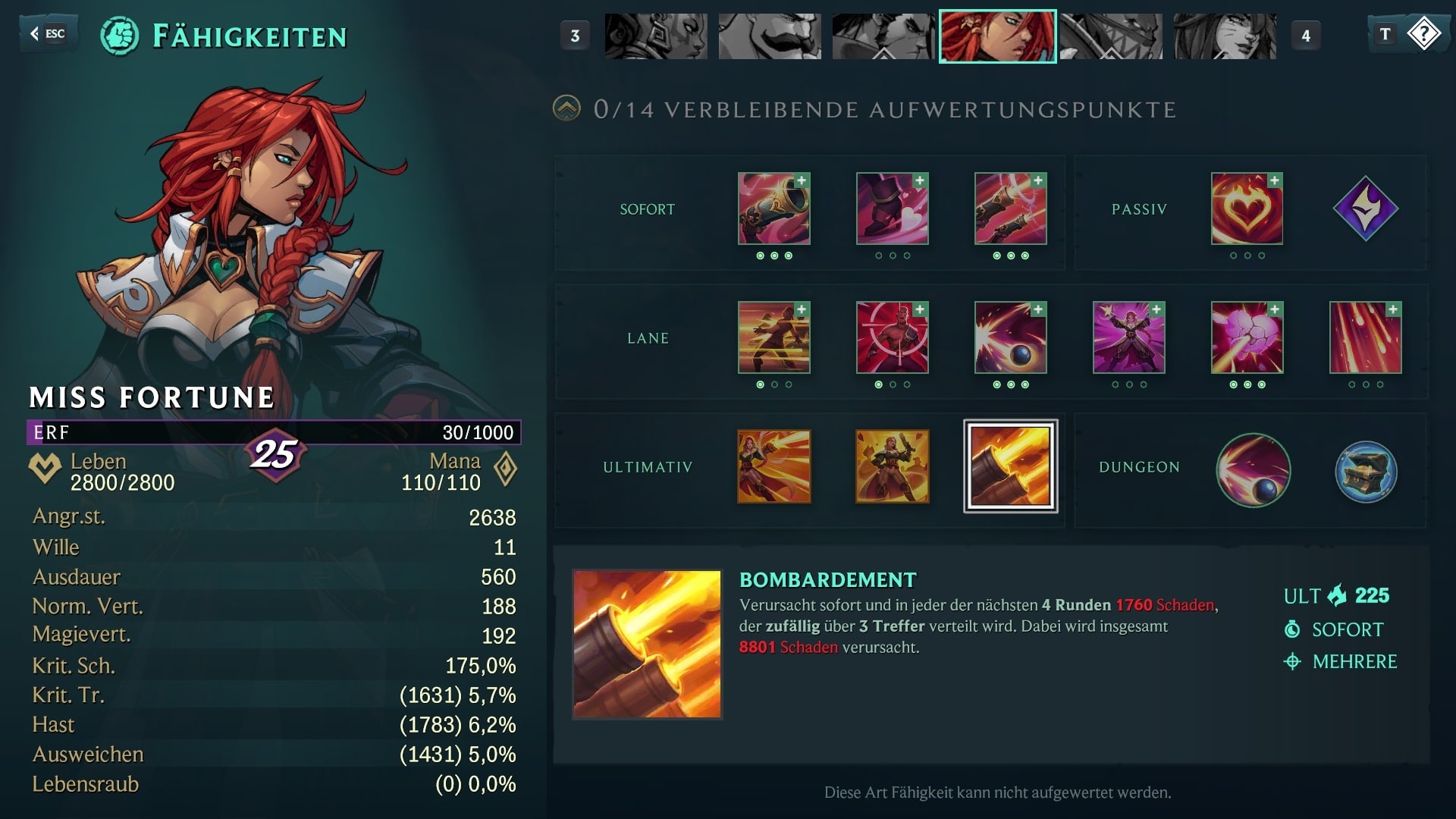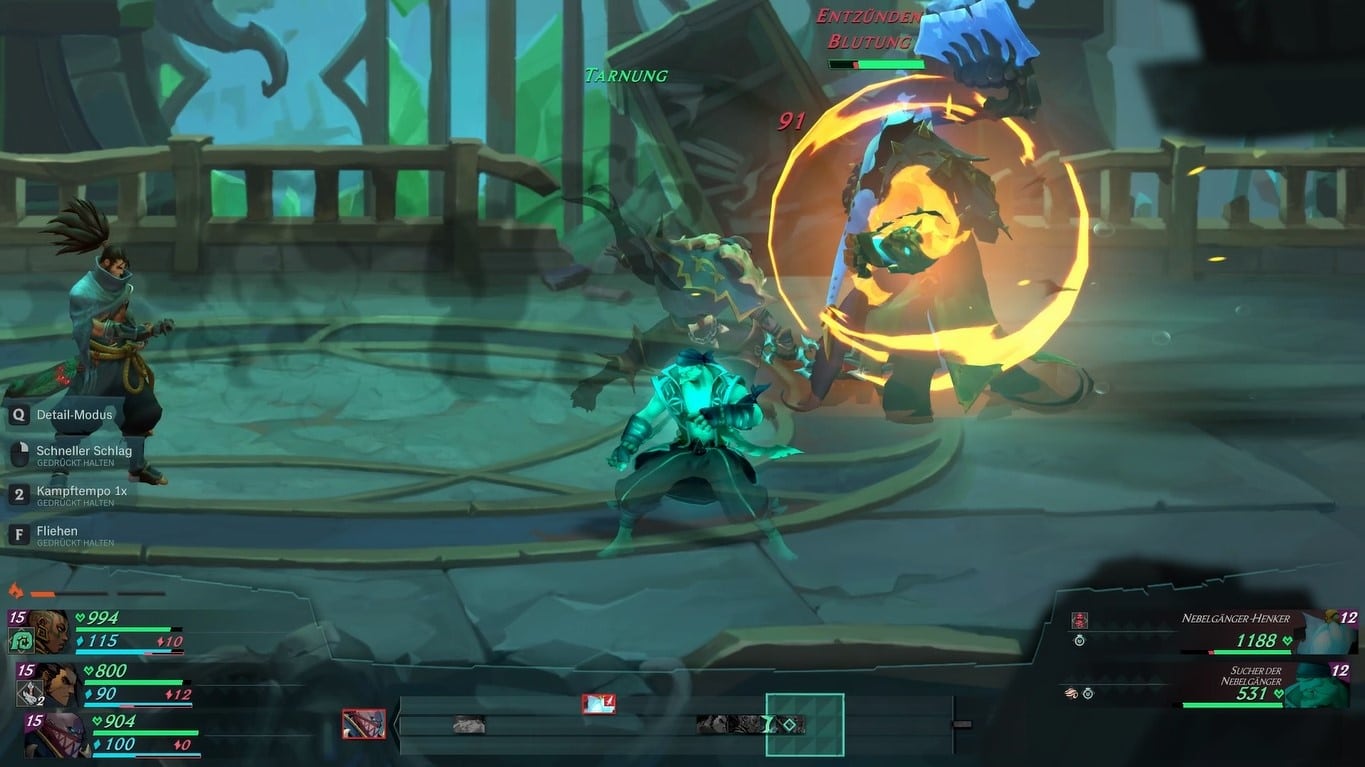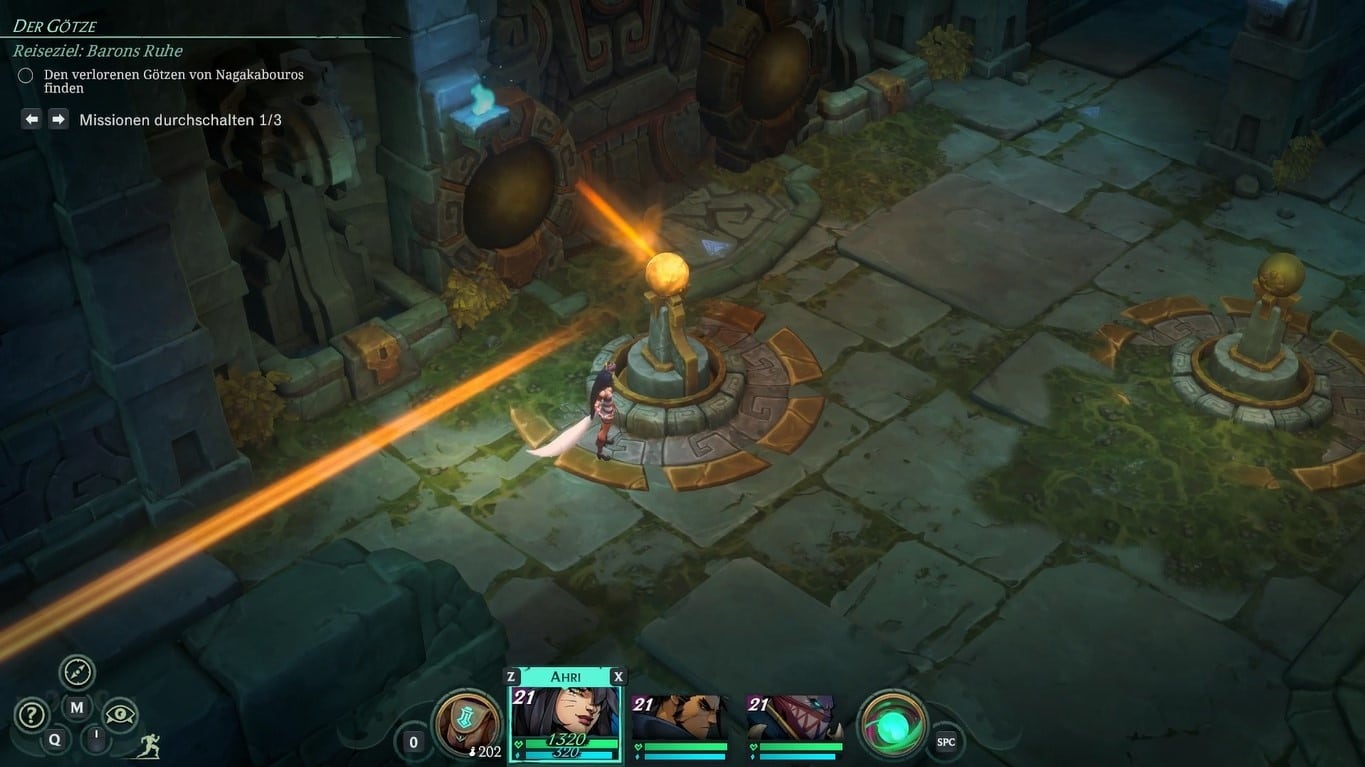With Ruined King, Riot dares an exciting experiment: Does LoL also work as a solo role-playing game? And is it suitable for Arcane fans to bridge the waiting time until Season 2?
Publisher Riot Games is currently trying to expand the League of Legends universe further and further. For example, through the fabulous Arcane series on Netflix. Or with the new solo spinoff Ruined King, which wants to dance on two weddings at the same time: On the one hand, the role-playing game naturally wants to captivate die-hard League of Legends fans. But another group of players might be even more important: The many Arcane fans who are thirsting for more Runeterra right now – and a considerable portion of whom would never start a LoL match.
Many would not touch the MOBA with a pinch of their hand; it is considered too stressful, complicated or toxic. Not quite reality, but not completely untrue either, even a LoL fan like me has to admit. And that’s where publisher Riot Forge boldly comes in with Ruined King: This single-player game with turn-based battles and strong JRPG hints wants to pick up those who are only interested in the universe. But of course, League veterans should also feel right at home and recognise their beloved heroes.
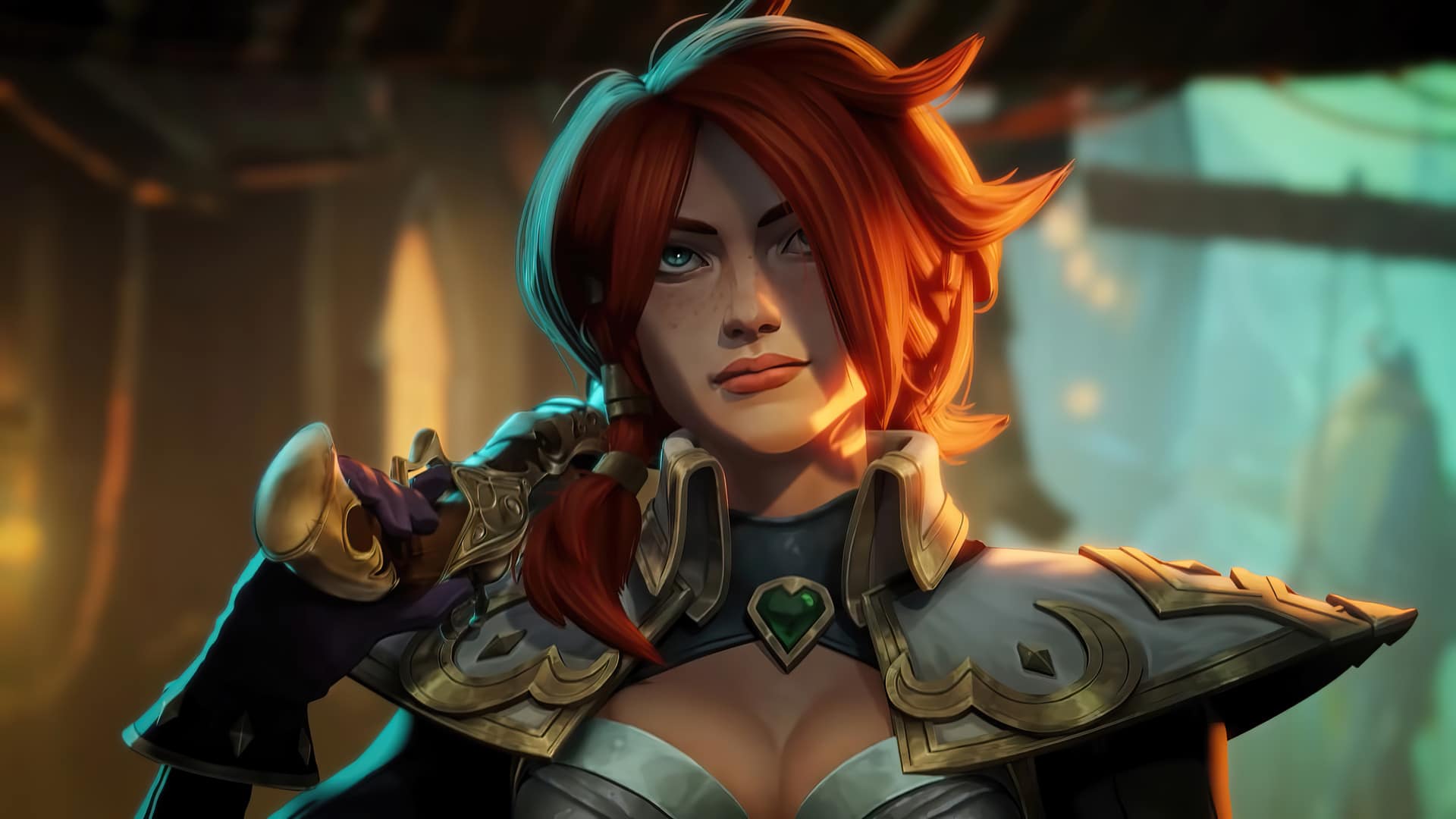
Those of you who have already played Battle Chasers: Nightwar with its loop of battles, exploring dungeons and collecting loot will also find their way straight to Ruined King. Both games come from developer studio Airship Syndicate and share the distinctive signature of comic author Joe Madureira. However, the grandiose gameplay formula of the predecessor has been further expanded, for example the battles are a bit more complex and you now run through a three-dimensional world instead of a simple map.
Table of Contents
Ruined King shows a whole new side of Runeterra
When I first heard where Ruined King was set, a loud squeal of delight escaped me: It’s going to the pirate city of Bilgewater! If you’ve never heard of it, it’s a huge fortress made of shipwrecks, massive sea monsters, cutthroats lurking around every corner. And on the nearby Shadow Islands lies an (in)deadly curse that torments restless souls. Finally a fantasy pirate setting, of which there are far too few in my opinion!
Said curse is giving our ragtag squad of champions a nasty headache: A mysterious force is trying to bring back the Ruined King, who in turn wants to cover the world with shadow powers. Of course, pirate queen Miss Fortune can’t let that happen! She is one of six characters you control in the game, all of them from LoL. On board are, among others, the warm-hearted shield bearer Braum, the lonely swordsman Yasuo and the sly fox woman Ahri.
The LoL connoisseurs among you will now be frowning: How on earth are these fundamentally different characters supposed to form a crew? Shouldn’t Braum, Yasuo and Ahri be on the other side of the world? Ruined King introduces the heroes one by one and explains their appearance quite elegantly with their respective background stories. However, almost all of the cutscenes run as stills only, and here Ruined King’s limited budget is noticeable. Even if you don’t have a clue about LoL, you can easily understand what drives the characters. In optional campfire conversations, they deepen their relationships even further.
But don’t expect the same level of storytelling as Arcane. While the Netflix series sweeps us away with profound drama, Ruined King tells a fluffy adventure story. You learn a lot about the six champions and the lore surrounding the Shadow Isles – so if you’re craving more Runeterra, you’ll get a hefty helping of it here. Just be prepared for a simpler meal.
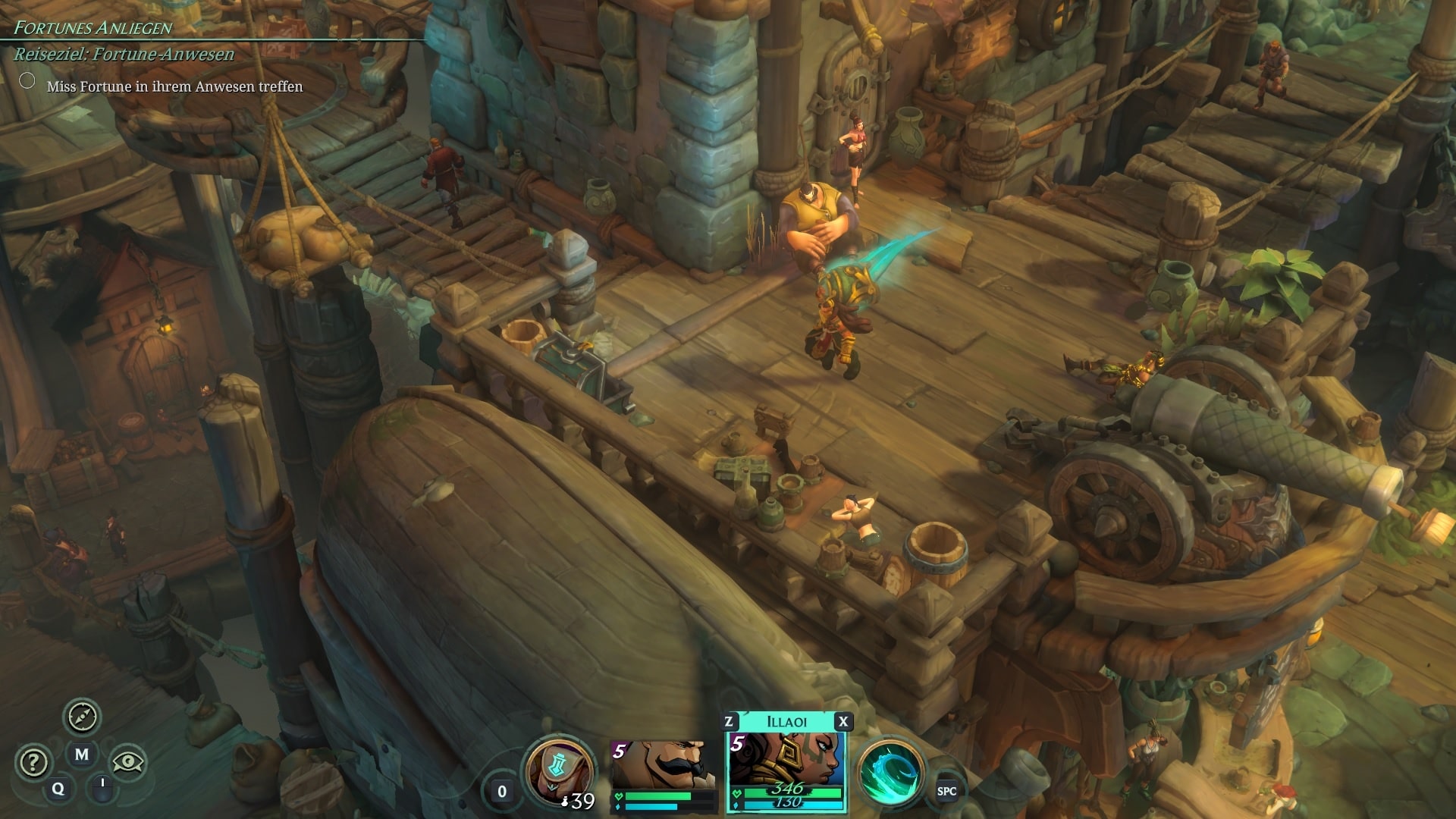
Classic Round Tactics meets League of Legends
Most of your time is spent hurling attacks at a variety of enemies in the turn-based battle screen, from port rats to giant golems. They all have different strengths and weaknesses, which forces you to be tactical. Fortunately, each champion comes with a special skill set.
The developers have achieved the feat here of transferring LoL characters to another genre so skilfully that they are instantly recognisable. Braum also knocks back enemies with his shield in Ruined King, Yasuo deflects projectiles with a blast of wind. Such familiar abilities are supplemented by new skills, which you can also upgrade.
However, it takes a few hours to get through all the points, runes and enchantments. For example, I only realised after the first patch that the journal gives me valuable rune shards (another type of skill point) because it wasn’t shown anywhere before.
The three lanes from the MOBA also appear in a new form. You choose for each skill whether you want to perform it easily, normally or powerfully, which goes at different speeds and sometimes triggers additional effects. And because that’s not complex enough, you also have to dodge environmental hazards, keep an eye on debuffs, equip your heroes, upgrade them with runes and so on. That’s a lot of fun, because the champions become noticeably more powerful and we then grin and roll over opponents who were still wiping the floor with us an hour ago. But the complex system also has disadvantages.

If you haven’t had much to do with tactical role-playing games before, Ruined King may overwhelm you, especially at the beginning. The tutorials are only moderately helpful because they often consist of too many text windows and are partly hidden in the menus. I had to play a dozen battles before I got the hang of the game. Fortunately, you don’t start with all the champions in your team, but gradually warm up to them.
Experimentation in battle is rewarded
And the effort is worth it! The battles are definitely the gameplay highlight of Ruined King. Once you figure out the system, lots of cool possibilities open up – each champion constellation has its own synergies, which of course also increases the replay value.
My favourite combination was Yasuo, Pyke and Ahri: the swordsman is at the front with his wind blade drawn, the assassin takes out weakened targets with sneak attacks, and the mage keeps everyone alive while she throws her deadly foxfire at enemies. When I change a champion, the whole dynamic changes. Time and again, I’ve volunteered to get into what should be unnecessary fights to try out another combo.
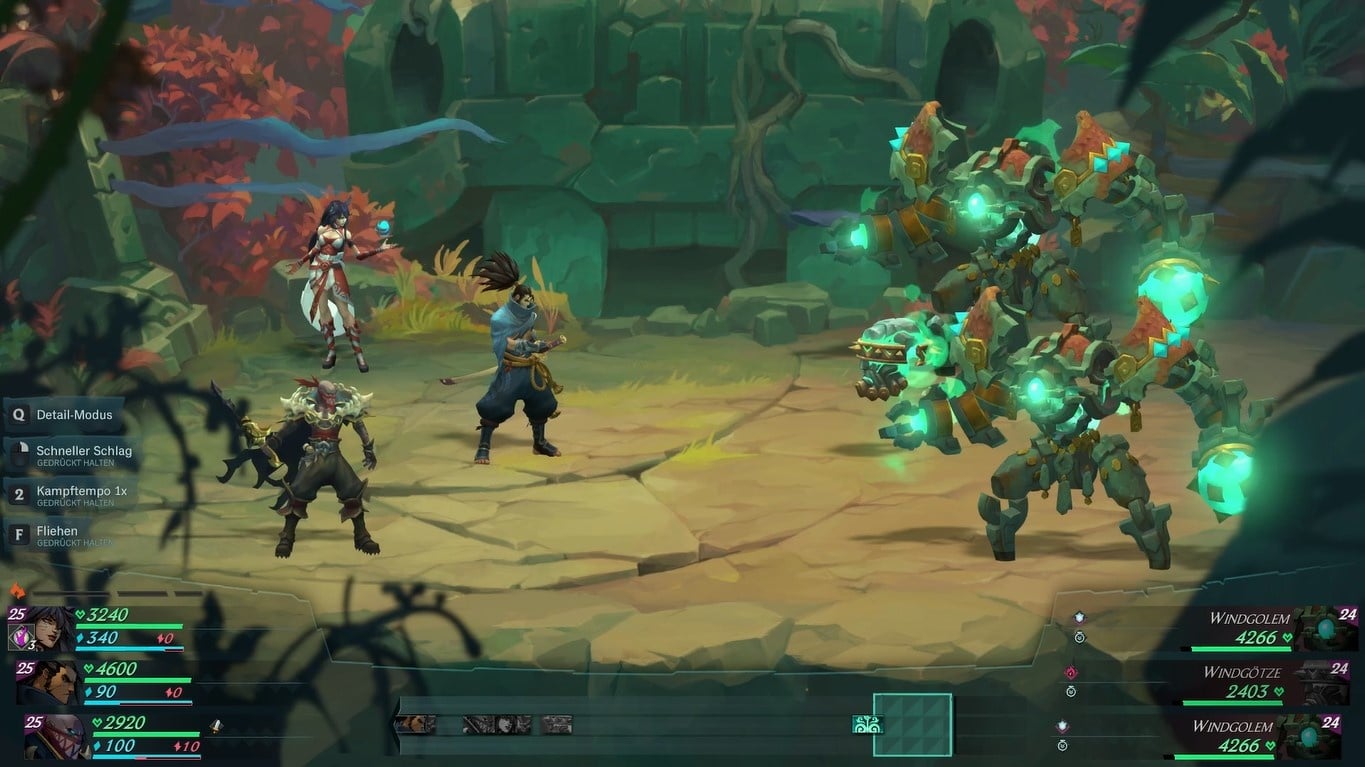
The fact that this is so much fun is also due to the great production: every ability feels satisfyingly bulky, the characters move smoothly and comment on the action of the fight. For example, they thank you for healing or swear bitter revenge when a team member falls.
The boss fights are particularly challenging and become more difficult as the story progresses. At the end, you have to prove whether you have really mastered your lanes and champions! If this is too stressful for you, you can switch to “Story” in the four difficulty levels and then skip the fights. However, you should be aware that this means missing out on the excellent gameplay of Ruined King. At least you still have the exploration of the world to do.
puzzles, dungeons and the inevitable fishing
Ruined King does not have an open world, but consists of connected hubs. In Bilgewater, for example, these are the individual districts. And of course there are plenty of dungeons waiting to be explored. There you will not only encounter many enemies, but also crack puzzles and collect lots of loot, such as crafting ingredients for powerful enchantments. If you have too little of one component, you can compensate with other ingredients, so you don’t have to grind for the one missing piece of leather. In this way, Ruined King cleverly circumvents the often frustrating collecting found in other JRPGs.
Apart from new enemy types and environmental influences, the dungeons are all fairly similar in design. So there are no surprises like time limits or fights without your usual equipment. Ruined King stays true to its formula and only throws more complex combat mechanics at you. Nevertheless, it doesn’t get boring, the loop is motivating and in addition, each exploration tour rewards you with valuable equipment that further strengthens your champions.
Die-hard puzzle fans might feel somewhat underchallenged by the puzzles in the game, mostly you simply have to activate columns in the right order or answer simple questions. Sometimes you also need the special dungeon skills of your champions, such as Braum, who shatters a crumbling wall. Depending on who you have on your team at the time, this opens up different paths.
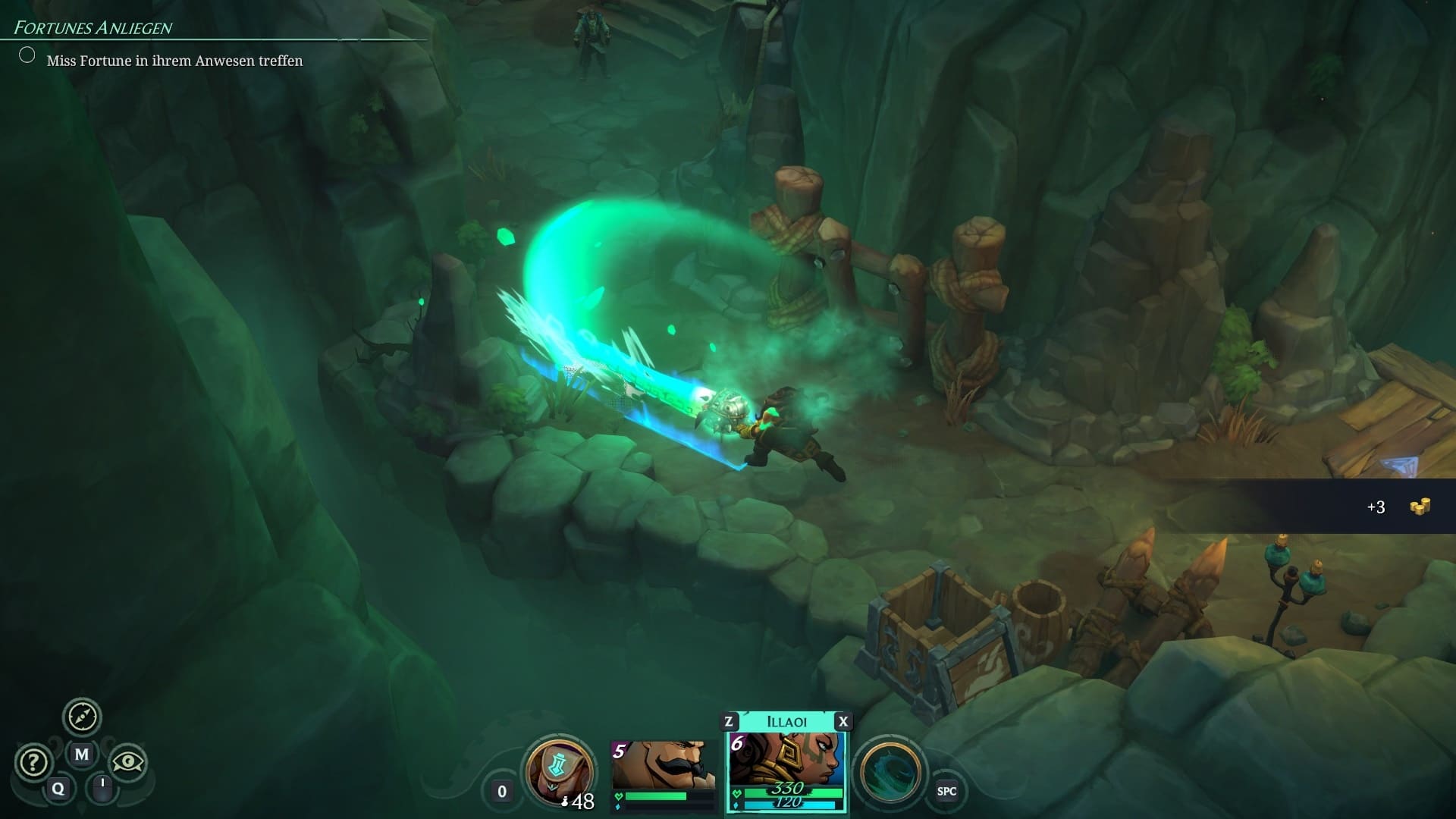
While we’re on the subject of puzzles: The map of Ruined King is a weak pointbecause it simultaneously reveals too much and too little. On the one hand, you can see immediately how many treasure chests there are in the level, but on the other hand, quest markers often don’t help you at all. You first have to find the right level and then call up the map again and again to actually find it. This could certainly have been done more elegantly, just like the diary hidden in the map menu. For example, by switching individual markers on and off.
If you’re not in the mood for dungeons, you can pursue side activities in Ruined King. For example, arena battles, small story missions with mini-decisions or bounty hunting. Or you can go fishing. Somehow fishing is gradually becoming an integral part of role-playing games and I don’t know what to make of it. But well, Battle Chasers also had a fishing feature.
However, in Ruined King it is also rather unmotivating: You press two buttons and sometimes get a sea creature in return, which you can sell for black market currency. That’s not particularly clever, and the fishing journal doesn’t trigger any collecting desire either.
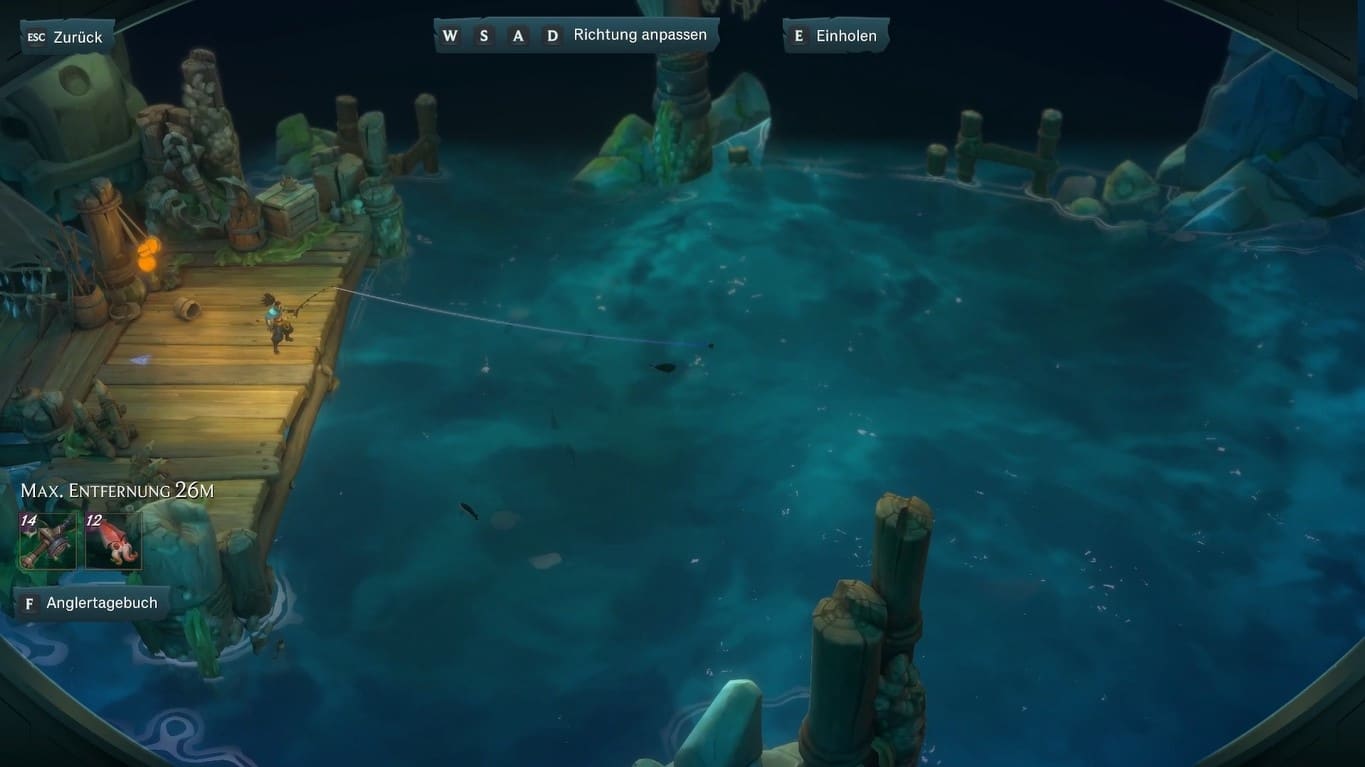
Whatever you do in the game world, you will always be accompanied by the fantastic soundtrack. In battle it drives you on, in sad moments melancholy violins press on your tear glands. No wonder: Gareth Corker, who was also responsible for the soundtrack of the Ori games, is on board as composer.
Who should play Ruined King? And who shouldn’t?
To answer the question from the beginning, yes, Ruined King succeeds in the difficult dance with LoL fans and LoL detractors. You don’t need any prior knowledge to fully enjoy this expansive solo role-playing game. The Arcane fans among you can pass the long wait for Season 2 wonderfully with this. And if you love LoL, then you’ll find plenty of small and big surprises dressed up in a rock-solid and fun JRPG garb. So if you’re still looking for a suitable game over the holidays, Ruined King is definitely a good choice for you.
I would only strongly advise those of you who are allergic to turn-based combat not to play Ruined King. If you skip the story mode battles entirely, you’re simply missing out on what the game is all about. But don’t worry, Riot is planning lots of other games with a Runeterra setting.
Editor’s verdict
Ruined King has become exactly what I had hoped for since its announcement. A few months ago, for our preview, I had the opportunity to talk to Joe Madureira about his studio’s new game. And his palpable enthusiasm infected me quite a bit back then. I’m honestly glad that in the end my expectations were not only met, but even exceeded.
To finally explore the idiosyncratic Bilgewasser for myself, instead of only reading about it in lore texts, has been a personal dream of mine for a long time. I mean: sea monsters that make Baron Nashor look like an adolescent earthworm? Ghost pirates? Sunken temples? Yes, please! It’s just a pity that the render sequences in the game run as barely animated still images, as I’m of course spoiled with high-end quality from LoL and Arcane. It would have been nice to get something like that in Ruined King too, but well, I can get over that.
I actually expected Ruined King to entertain me for maybe 20 hours. As of now, it’s easily 40 – even though I’ve spurned fishing for the most part. And I’m already itching to go out again with other champions.

